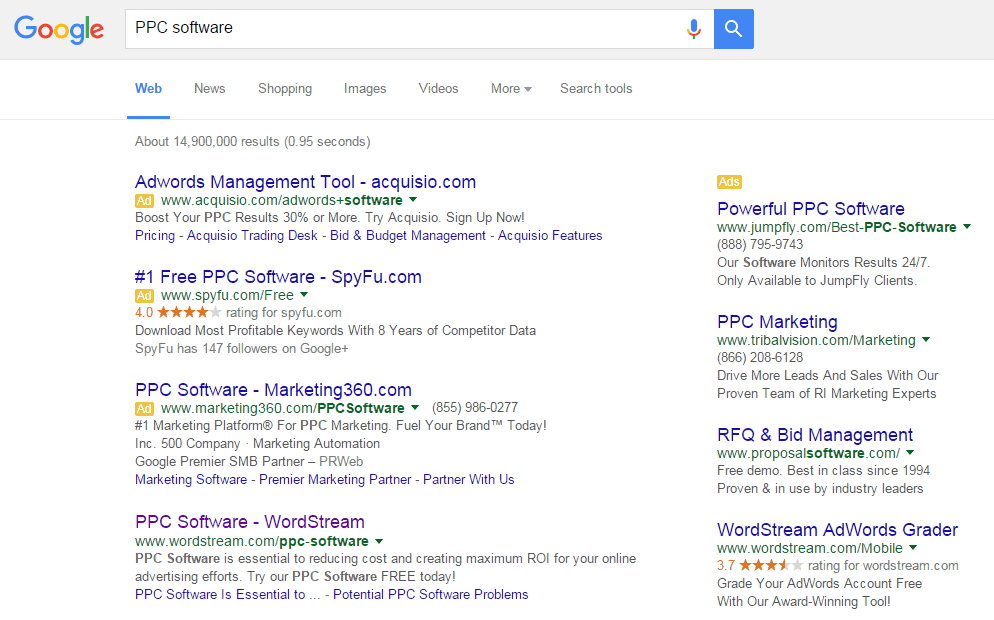Just when you think you’ve got the hang of something, the marketing world flips. The new strategy you implemented goes down the drain and you’re stuck. Not only do you have to pick up the pieces of a marketing strategy gone wrong, but you also need to find a way to climb back up the ranks again.
It’s not an easy position to be in, yet many businesses find themselves drowning as a result of updates, changes and tweaks.
Digital marketing advancements are certainly a blessing and a curse, aren’t they? On one hand, you are happy for new opportunities to reach your customers. On the other, your business can run into a few problems trying to keep up.
Here are three business problems I’ve seen caused by digital marketing advancements and a few solutions to keep you nimble as you move forward.
1. Difficulty Ranking High on Search Engines
Obtaining the coveted position on page one of the search engine results has always been one of the biggest challenges in digital marketing. The first organic position (the one Google chooses for you; not the ones you pay for) receives 33% of the traffic, according to Chitika. The second position receives 18% and the rankings go down from there.
To reach the number one spot, you must optimize your website. There’s a lot that goes into optimization, including in-depth keyword research, knowing your domain authority, knowing the domain authority of the pages you’re ranking against, creating exceptional content, getting social media shares, etc. The list goes on and on.
10 years ago, these strategies weren’t the same. Years ago the best way to rank high was to get a backlink from any site on the Internet. Although backlinks are still an important slice of the SEO pie, they’re something that you must obtain with caution.
Google caught onto the digital marketing game and made updates to its super secret algorithm to stop spammers in their tracks. Their goal was to find the highest quality sites to put in the top position. To do this, they advanced their algorithms, changed up the game, and in turn, pushed several big sites down the list overnight.
It’s not just small businesses affected by Google’s updates either. Consider the case of eBay who saw 80% of their prime search result listings gone from the first page of Google overnight after the Panda 4.0 update.
It’s a nightmare scenario for businesses. eBay wasn’t the only one affected. A&E Biography and History.com were also affected by the update. These are all companies that invested a good amount of money building an optimized website so they could hold the top spot.
How can you avoid the same fate with the next algorithm update?
There is no definite solution to this. You still want to employ smart SEO strategies to show search engines what you have to offer their customers, the searchers. If you continue to employ smart methods for reaching the people you serve, you’re likely to remain immune to updates.
Algorithm changes are meant to stop the bad guys. If you don’t try to scam the system and instead focus on creating valuable content to answer your reader’s requests, you’ll win every time.
2. Less Person-to-Person Interaction
It’s no secret that people buy from people. As more of your customers turn to the Internet to research and make their buying decisions, keeping that personalized interaction feeling personable and relatable is tough.
Your customers expect their buying experience to be catered to their needs, but how do you create one campaign for thousands of people that looks and feels personal to just one person?
The answer: marketing automation.
Although the digital marketing advancements have led more people to expect personalized care from businesses in a less than personal environment, there are ways around it. By harnessing technology and using psychological triggers during the buying process, you’re able to reach more people on a one-on-one level.
Here’s an example.
In email marketing, sending promotional campaigns can often times feel ineffective. People aren’t opening your emails anymore and click through rates have plummeted compared to a year ago.
One company that found a way around it all is JetBlue. Here’s what their one-year anniversary campaign looks like.
They have an automated email that gets sent to each person after they’ve been on their list for a full year. The email wishes them a happy anniversary and then talks on brand about how they can celebrate together – with a trip.
This example shows that you can still automate your campaigns without losing the personal touch. You can make the email feel personal in the context. You can also use one-on-one interactions, such as the one year anniversary of connecting, to spark intentional, yet automated messages.
3. Dropping Reach on Social Media
Whether you manage your company’s Facebook page or you use Facebook in your personal life, one thing is certain – you’ve likely seen a change in the type of posts you’re seeing. That’s because Facebook (like Google) is constantly updating how it determines what posts to show.
Facebook is trying to get businesses past the simple strategy of posting to promote. Their customers, the people who scroll through the newsfeed, don’t want to see this. They want to see relevant posts such as friend’s faces, delicious recipe videos and of course, cat gifs.
To determine what people want to see on a regular basis, Facebook recently updated their EdgeRank algorithm. This governs what people see in the news feed.
Perhaps the biggest takeaway from this update isn’t surprising. It’s that Facebook only shows the posts that get a high level of interaction because those are the ones their audience wants to see.
For businesses, the goal is to get more shares, likes and comments so you can show Facebook what your posting is relevant and meaningful. Unfortunately, that’s often times easier said than done. It’s a catch-22. If a person is doesn’t see your post, she can’t engage with it. If a person doesn’t engage with it, Facebook won’t show it.
There are a few ways around this.
- Create a culture of engagement on your Facebook page. This is hard work, but with the right strategy, it can happen.
- Pay to promote your posts to encourage more engagement. The more you pay, the more people will see your posts, helping you get out in front of the crowd.
The Overarching Theme
Notice an overarching theme to these top three business problems? They all have to do with not being seen.
Updates to digital marketing technology aren’t going away anytime soon. The goal is to get creative with your marketing so you aren’t hit hard by these changes. By having a strategic focus to “work the system,” you’ll lose. By focusing your marketing on the person behind the screen, you’ll have a better chance at not being affected by the regular updates.
Not sure if your marketing strategy is putting you at risk? Let’s talk over a free business consultation.



























